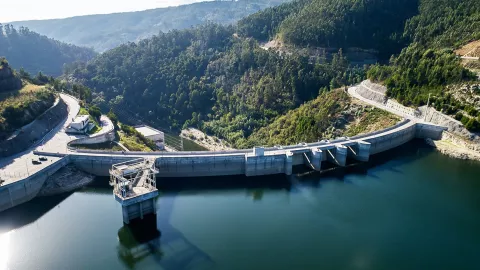Dams store water that is used primarily for human consumption and irrigation, in addition to allowing for the production of energy with which to supply the electricity grid.
But beyond these functions, hydroelectric ventures end up serving, in other ways, populations and the environment.
Putting dams at the service of populations at different levels, in addition to electricity generation, was a task that was developed over several years in Portugal. Hydroelectric production began to grow in strength from the 1950s with the construction of dams in the Cávado, Zêzere, Tagus and Douro river basins. At that time, the operations were manual, time-consuming and isolated; they were dependent on a large number of workers, from the turbine driver to the machinist, distributed throughout various locations (engine rooms, turbine, dam, command room,...).
This reality has evolved and, at present, EDP Produção (a EDP Group company which operates dams in Portugal to produce electricity) currently operates in a central and automated way 59 hydroelectric power plants with a total of approximately 6.7 GW. In Portugal, this management is done from a single location - the Center for Remote Control of Hydroelectric Power Plants, where the operation and monitoring of the activity of all the dams and hydroelectric power plants of EDP Produção takes place.
This highly technological control center guarantees a global view over the different river basins, allowing for greater vigilance and control over them, particularly in hazardous situations to people and property. Such is the case of periods of drought or floods.
Dams or superheroes?
It may not be common knowledge, but dams play a key role in mitigating the consequences of extreme situations for populations, such as floods or long periods of drought.
Each dam has different capacities; in other words, each dam stores a different amount of water, usually measured in hm3 (cubic hectometers - 1,000,000 m3). For example, while the Régua reservoir has a capacity of 95 hm3, the Baixo Sabor can store 1095 hm3.
In view of this storage capacity, in the concession contracts entered into with electricity generating companies, such as EDP Produção, limits are defined for the operation of each one. These limits indicate the minimum and maximum amount of water that each reservoir must keep stored at any time regardless of whether or not it is producing energy.
This means that EDP Produção, alongside the Portuguese Environment Agency, has to make a sensible management of the water storage in each reservoir to guarantee energy production and, simultaneously, to respond to the population's needs, according to the meteorological conditions.
This is why hydroelectric plants are said to play a role in the "modulation" of water flows - the amount of water that is trapped in the dams or that is released downstream varies according to the needs and risks.
Minimizing the effects of floods: the Lima example
In the basin of the Lima river there are two hydroelectric plants (Alto Lindoso and Touvedo) inserted in a region characterized by heavy rainfall. The Alto Lindoso dam, with a total capacity of 379 hm3, plays an important role in flood control, in particular by minimizing their impact in the downstream riverside areas - Ponte da Barca and Ponte de Lima.
If high levels of precipitation occur in the intermediate basin between Alto Lindoso and Touvedo, the large storage capacity of the first can withstand the total inflow of Lindoso's affluent. If this is not possible, it at least allows for the controlled release of discharged flows, thereby minimizing downstream impacts.
This process of flow management is complex but effective - on one hand, it is based on the analysis of meteorological information and, on the other hand, in a joint effort between EDP Produção, the Civil Protection and the Center for Forecasting and Flood Prevention (in the case of the Douro).
In case of higher inflow forecasts, flow modulation is carried out: the turbines of the power plants are operated in advance to create the capacity to accommodate the maximum amount of water, thus dampening the peak of the flood.
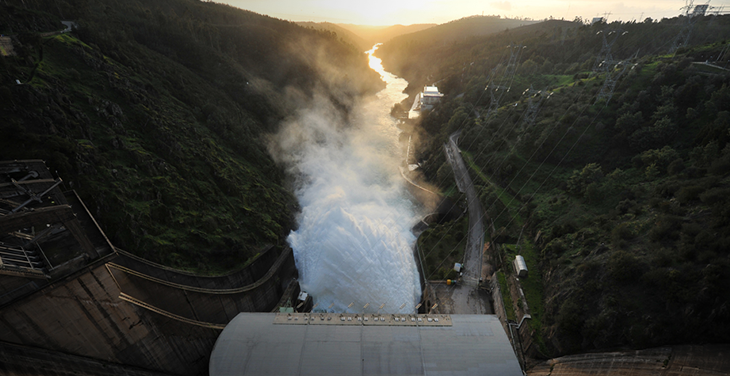
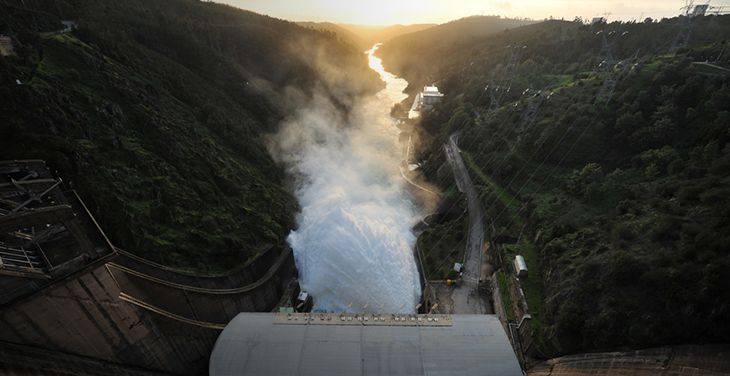
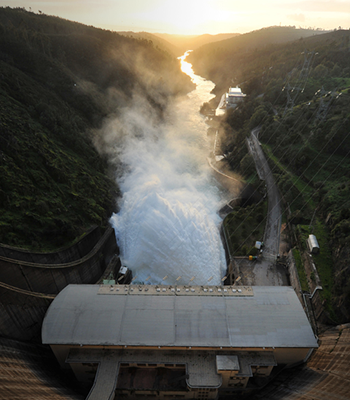
Water all year round
Where drought situations are concerned, the reverse is true. If the weather forecasts point in this direction, the action of EDP Produção is to prevent and restrain the turbine in order to guarantee water reserves for human consumption. If, in situations of high flow, the procedure involves unloading when necessary, in drought situations care is taken to accumulate and not use all the water from the reservoir.
This is what happened in 2017, a year of low rainfall, which led to low levels in the reservoirs. Despite the fact that it was possible to turbine at these times, EDP Produção chose to keep water above the minimum levels defined in the concession contracts, and even limited electricity production in some cases. In this way, it was possible to guarantee that there was water in the reservoirs to respond to priority uses: daily consumption for the populations and irrigation.
This happened in 2017, but is the normal procedure in all periods of scarcity. There is always an effort not to use all the water in the reservoir and to leave some in order to satisfy priority uses.
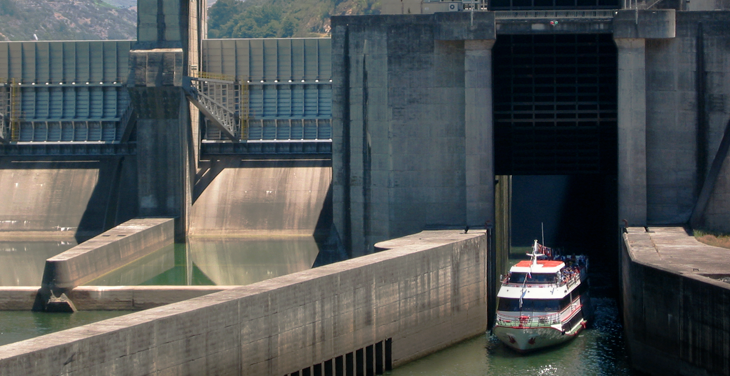
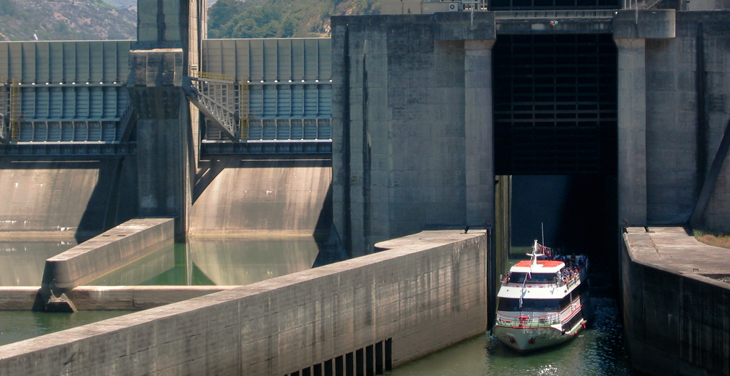
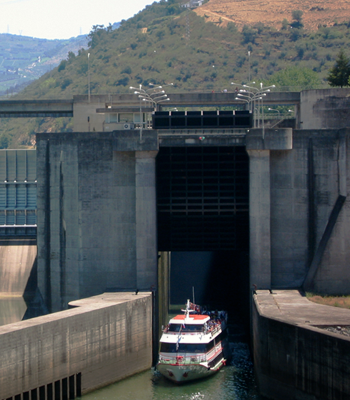
A boat lift
In the case of the Douro river, the introduction of dams at several points along the river, which was previously navigable in Portugal, came with a challenge: how to ensure that vessels would continue their normal course, having now a dam (at a gigantic gap) in the middle?
The solution is an impressive hydraulic engineering project: an authentic boat elevator. In the Portuguese case, there are 5 structures of this type in the Douro River, most notably the one at the Carrapatelo dam with a gap of 35 meters, the largest in Europe.
This "elevator" is actually called a sluice. It consists of a compartment, built on one side of the dam, that vessels can enter so that they can be transported beyond the gap.
The compartment is progressively filled with water which, like an elevator, takes the vessel to the top of the dam. After this, the "elevator" is opened and the vessel can continue its journey, already in the upstream (therefore, in the highest part) zone of the dam. The reverse route is performed by emptying the sluice.
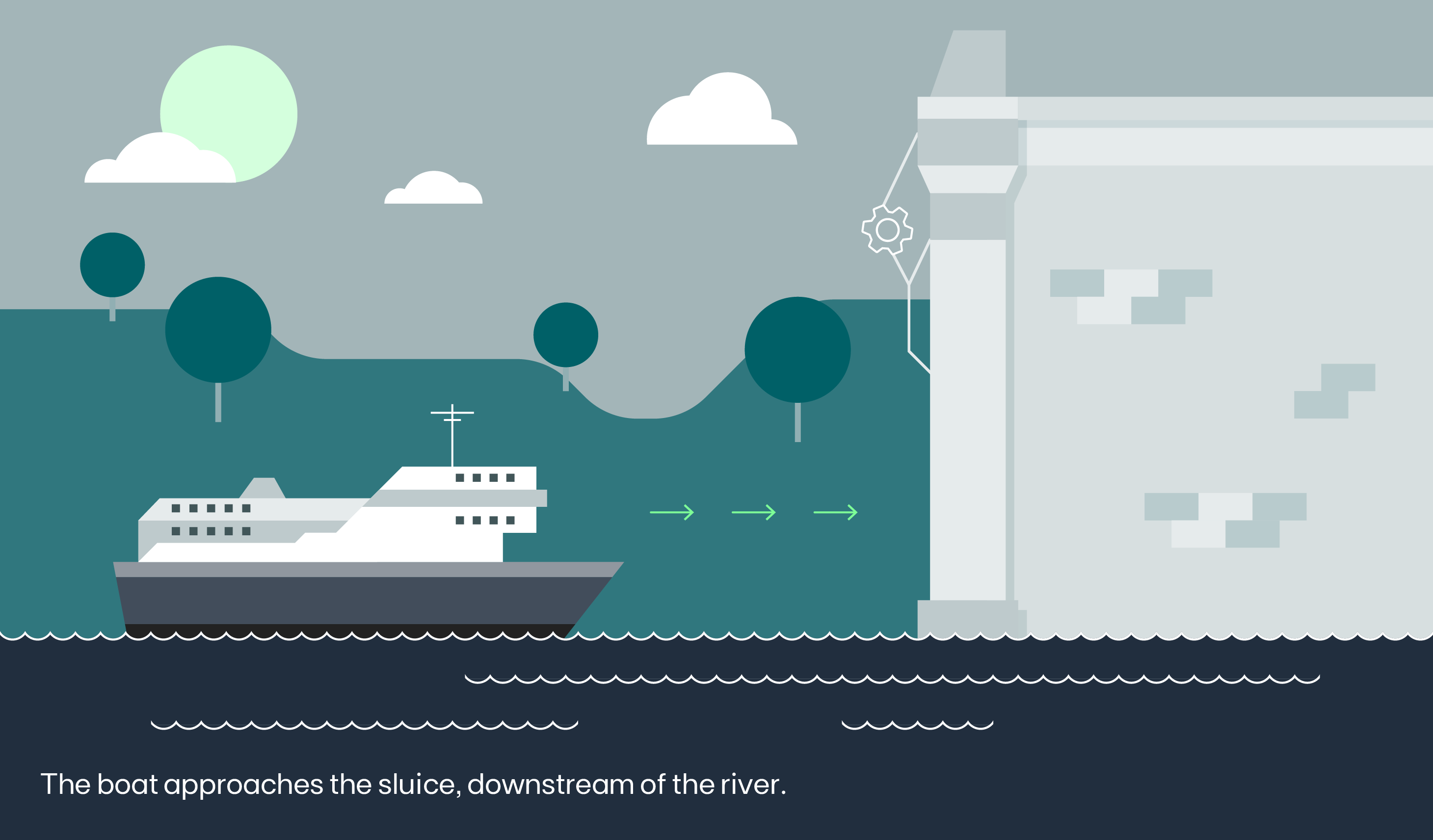
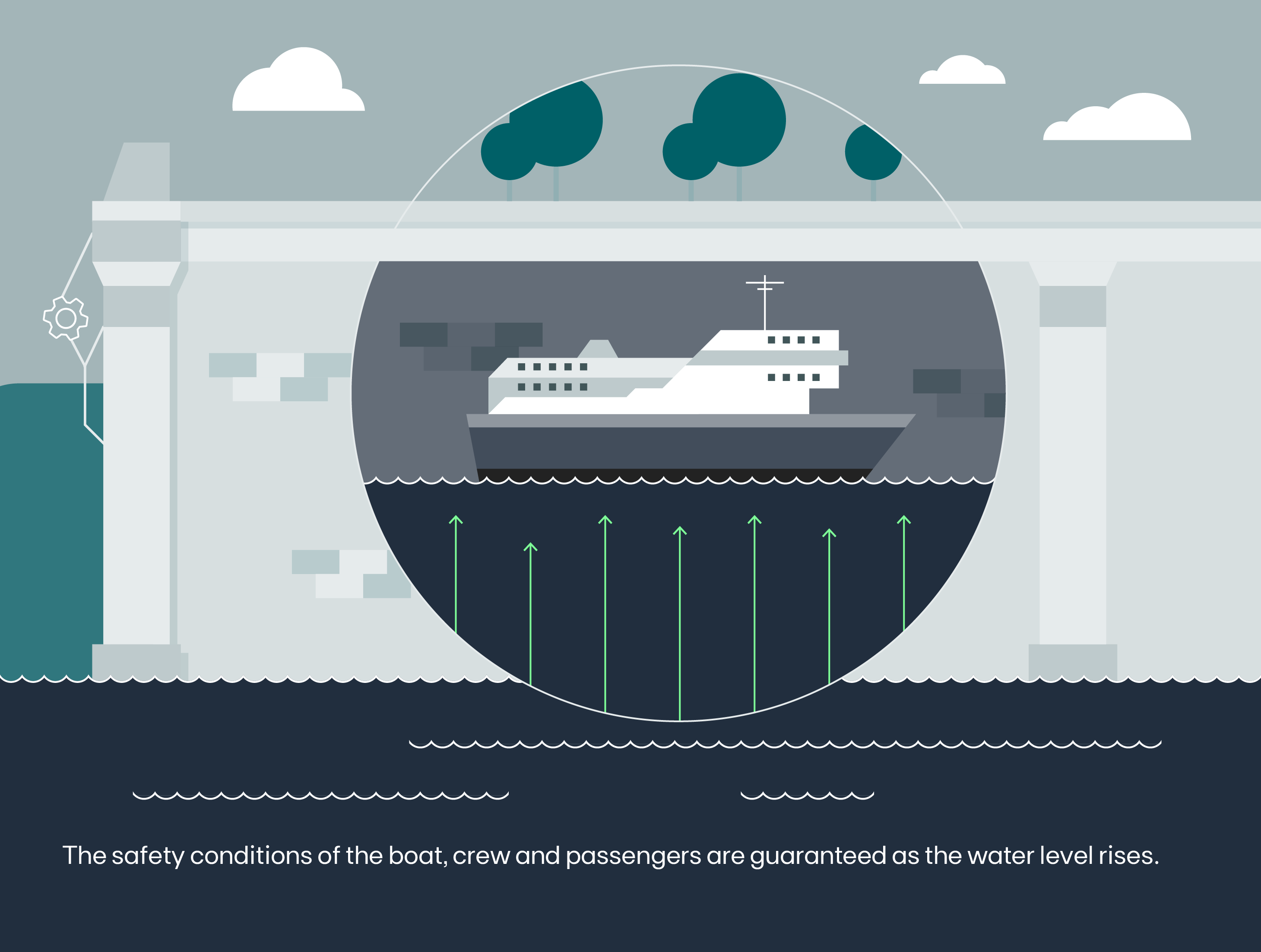
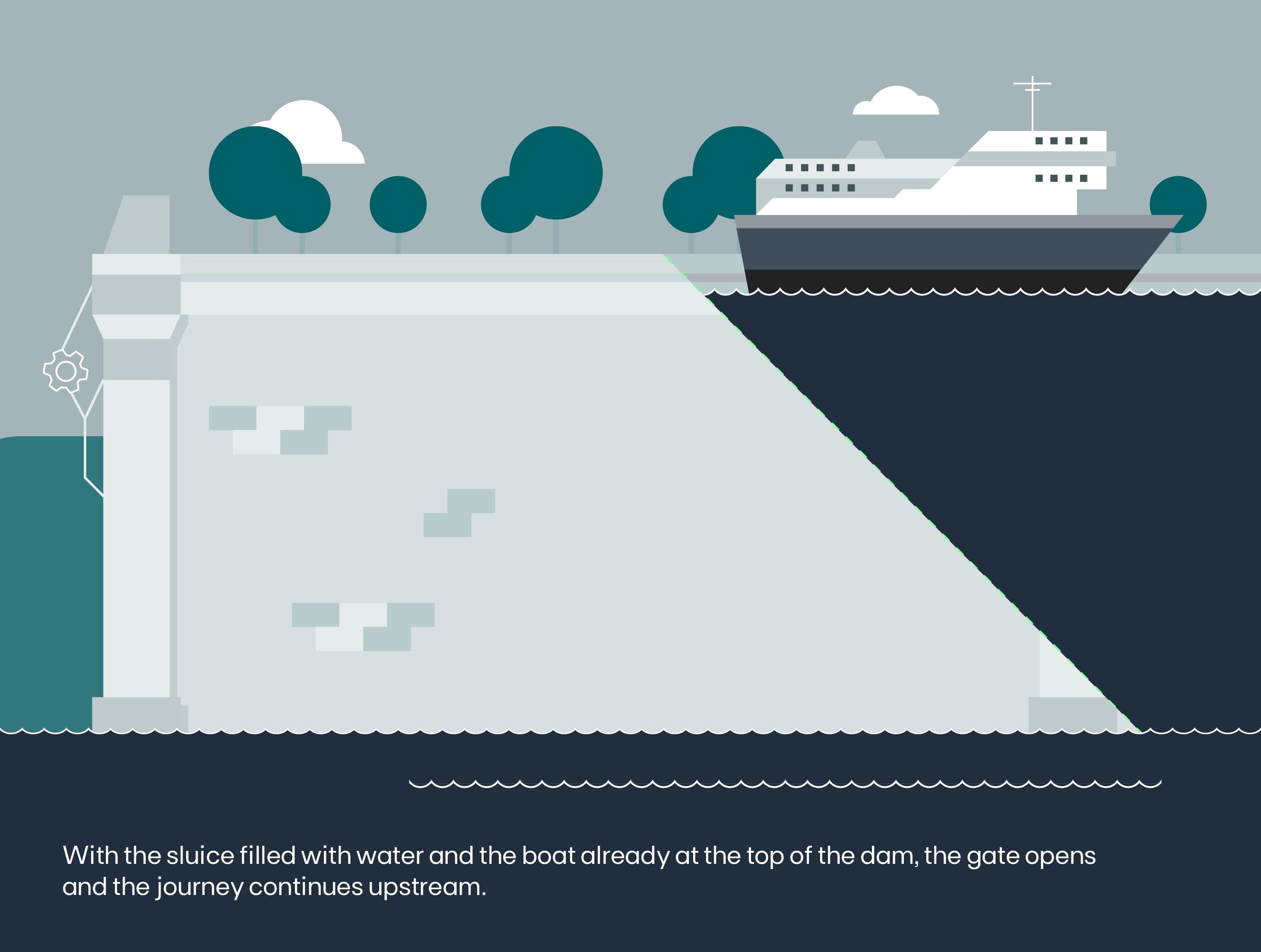
... and a "cradle" for fish
Since the construction of dams implies changes to the terrain, ecosystems and even to the life of the populations, the entities that make use of dams to produce electricity, as is the case of EDP Produção, have several environmental and social concerns.
Intervention plans are designed with the help of municipal authorities and local populations to mitigate the effects of dam implementation. These plans go, in many cases, beyond simple "compensatory measures"- they boost the region, revitalize local flora and fauna and bring better conditions to the populations.
One example was the creation of a "nursery" for the nesting of fish in the Sabor river. With the construction of the Baixo Sabor dam, the community that inhabits that riverside area and that is still dependent on fishing, saw this activity at risk. This is because, after the appearance of the dam, some species of fish that were in great demand by the restaurants in the area could not follow their normal course and reproduce.
In the Vilariça river (Torre de Moncorvo county) a nesting system was created for these species in clean aquifers. The "nursery" works mainly in drought years when the water stream lowers considerably: to compensate for this reduction of flow, water is pumped from the Baixo Sabor dam.
In this way, the spawning of these fish in the river, mainly Bogas, considered authentic gastronomic delicacies in the region, is maintained. This was one of the 48 environmental safeguard measures put in place by EDP Produção.
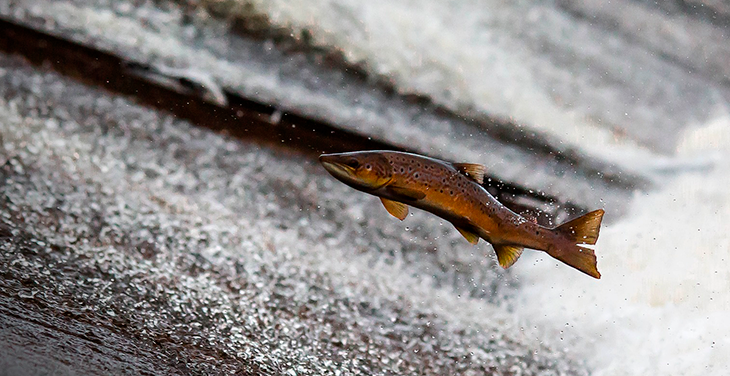
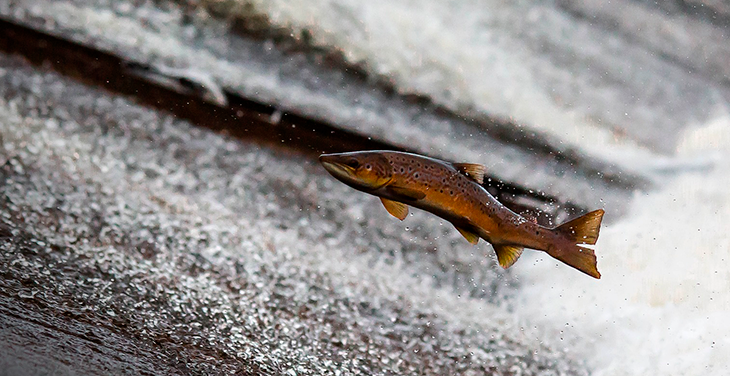
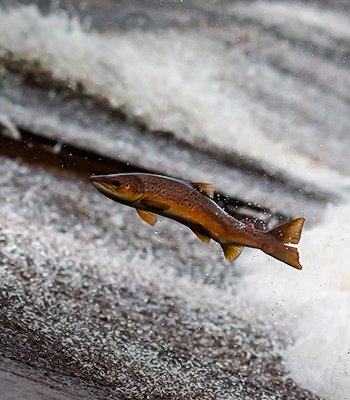
Fish that climb ladders?
In addition to "nurseries," there are other ways of minimizing the barrier effect of dams on fish, including the so-called "fish ladders." These devices allow fish to move between the upstream and downstream (and vice versa) of the dams where they are installed. They consist of stairs, in the normal sense of the term. That is, a series of low obstacles through which the river flows and to where the movement of the waters attracts fish, inducing them instinctively to jump from step to step. The goal? To reach the waters on the other side and to continue the journey, either to spawn or to continue their migratory route.
The speed of the water that falls down the steps must be enough to attract the fish, but not so much that it makes them give up and go back instead of continuing their journey upstream.
In the case of the large dams operated by EDP Produção, they do not have fish ladders but have other types of passages, such as the Borland sluices (in the various dams in the Douro) and the elevators (Touvedo), whose objective is to allow the fish to get up the river to complete their life cycle. In cases where dams are not equipped with these devices, manual transposition of fish may also be carried out.
These environmental compensation measures meet EDP's commitment to Sustainable Development Goals, contributing to avoid or reduce the loss of biodiversity, favoring a dynamic, comprehensive, locally owned and long-term vision, aiming at a globally positive balance.
Doing works or going for a bath
EDP Produção receives frequent requests for the management of flows and quotas for the reservoirs for the most diverse entities in order to carry out various activities in the rivers. For example, there may be a need to release water downstream because there will be a nautical competition, a religious procession with boats or a river crossing.
There are also cases where improvement works on viaducts or bridges, or inspections are required, and it is requested not to release water (or to do so in a reduced way) in order to facilitate or make the operation easier. This was what happened in Torres do Mondego where, in order to build a pedestrian crossing, EDP Produção was asked not to turbine so that the work could be completed.
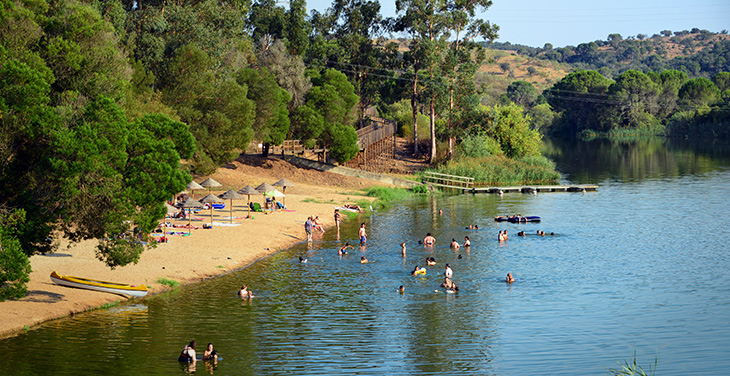
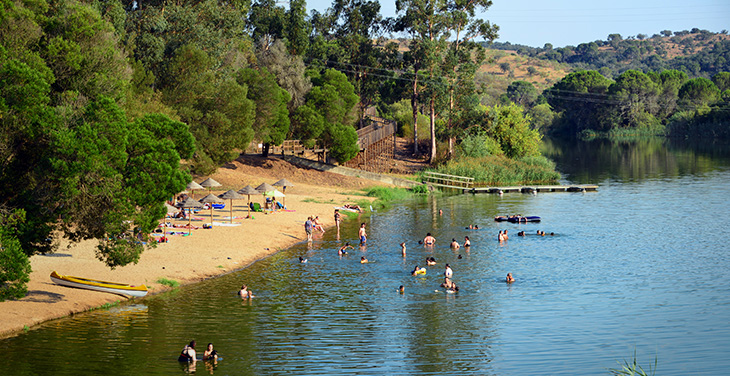
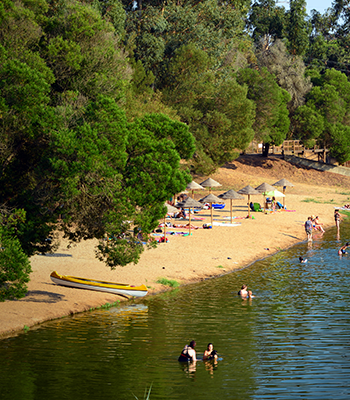
Dams are also important in creating conditions for river beaches: those in the reservoirs and those located downstream.
To guarantee conditions for the existence of the beaches that are in the reservoirs themselves, during the summer EDP Produção seeks to keep these reservoirs at quotas that allow for the enjoyment of the beaches.
On the other hand, on the beaches downstream from the reservoirs, there is an interest in not releasing very high flows. In the Vouga or the Cávado river, for example, the flow is limited for safety reasons; that is, there must be some flow for the beach to exist, but it must be modulated gradually and slowly, always with the safety of the bathers in mind.
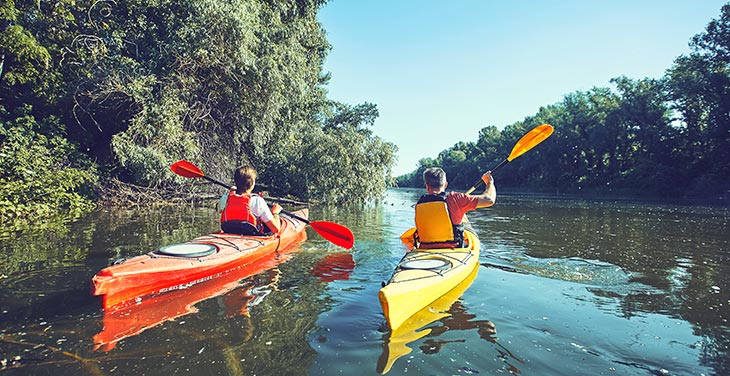
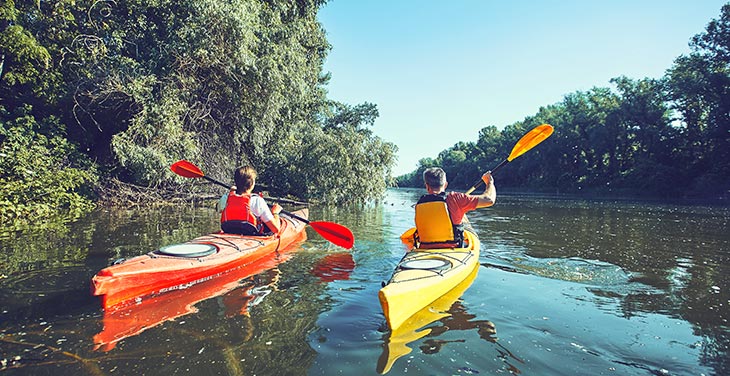
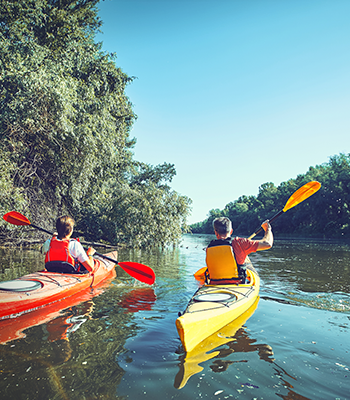
What about energy production?
In the management of reservoirs, the priority is the storage of water for human consumption and irrigation, only then comes the production of energy. In this context, in addition to helping to reduce dependence from the outside, dams have two main advantages in terms of energy management. On the one hand, they inject renewable energy into electricity grids and, on the other hand, they use periods in which energy is produced in excess and exceeds consumption to boost the production of even more clean energy. How?
In plants equipped with reversible machines it is possible to use the surplus of energy through pumping: the energy that is not being used in the network by the consumers is used to move the turbines in the opposite direction and, thus, refilling the water reservoirs. This water will be stored until there is a new increase in electric consumption that justifies the beginning of operations.
There are "a thousand and one" ways to put dams at the service of people and the environment in Portugal.
Hydroelectric plants are a source of clean and renewable energy that does not produce polluting agents, thus contributing to Portugal achieving its international environmental commitments and being increasingly a solid bet for the production of electricity worldwide.
____
Note: EDP concluded in December 2020 the process of selling a portfolio of six water plants to an investor consortium, led by Engie. The portfolio of six dams in the Douro basin involved in this operation includes three reservoir plants - Foz Tua, Baixo Sabor e Feiticeiro, and three water wire plants Picote, Miranda and Bemposta.
